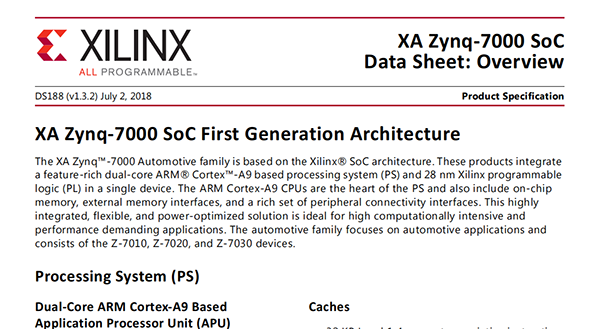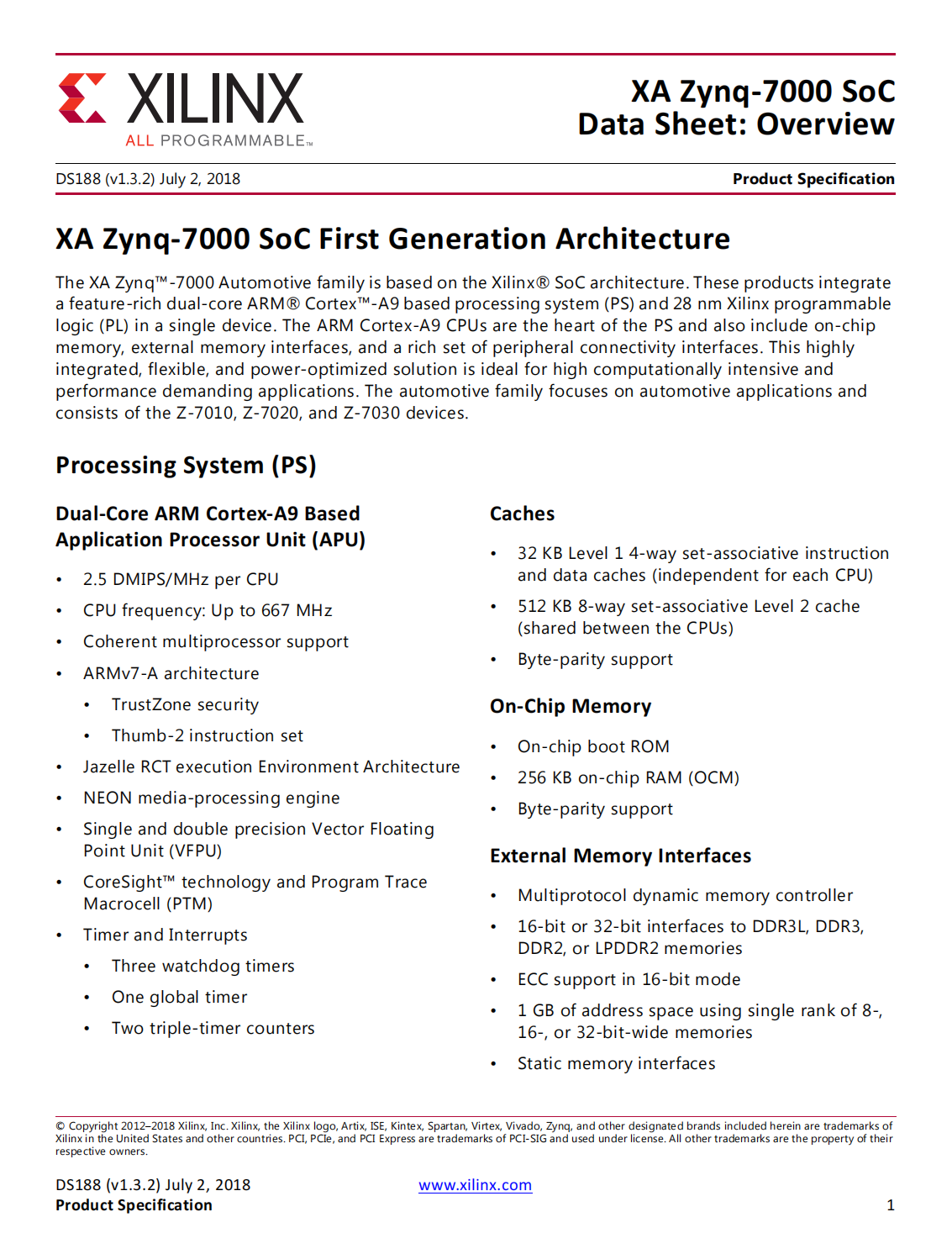

XA Zynq-7000 SoC First Generation Architecture
The XA Zynq™-7000 Automotive family is based on the Xilinx®SoC architecture.These products integrate a feature-rich dual-core ARM®Cortex™-A9 based processing system(PS)and 28 nm Xilinx programmable logic(PL)in a single device.The ARM Cortex-A9 CPUs are the heart of the PS and also include on-chip memory,external memory interfaces,and a rich set of peripheral connectivity interfaces.This highly integrated,flexible,and power-optimized solution is ideal for high computationally intensive and performance demanding applications.The automotive family focuses on automotive applications and consists of the Z-7010,Z-7020,and Z-7030 devices.
Processing System(PS)
Dual-Core ARM Cortex-A9 Based
Application Processor Unit(APU)
•2.5 DMIPS/MHz per CPU
•CPU frequency:Up to 667 MHz
•Coherent multiprocessor support
•ARMv7-A architecture
•TrustZone security
•Thumb-2 instruction set
•Jazelle RCT execution Environment Architecture
•NEON media-processing engine
•Single and double precision Vector Floating Point Unit(VFPU)
•CoreSight™technology and Program Trace
Macrocell(PTM)
•Timer and Interrupts
•Three watchdog timers
•One global timer
•Two triple-timer counters
Caches
•32 KB Level 1 4-way set-associative instruction
and data caches(independent for each CPU)
•512 KB 8-way set-associative Level 2 cache
(shared between the CPUs)
•Byte-parity support
On-Chip Memory
•On-chip boot ROM
•256 KB on-chip RAM(OCM)
•Byte-parity support
External Memory Interfaces
•Multiprotocol dynamic memory controller
•16-bit or 32-bit interfaces to DDR3L,DDR3,
DDR2,or LPDDR2 memories
•ECC support in 16-bit mode
•1 GB of address space using single rank of 8-,
16-,or 32-bit-wide memories
•Static memory interfaces